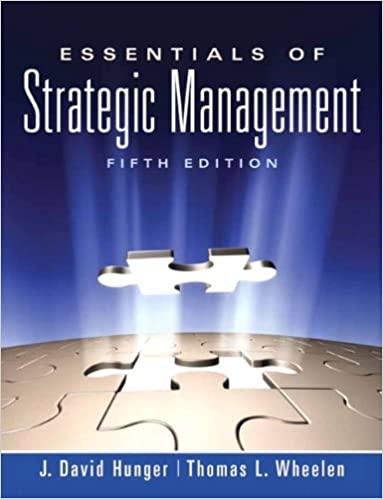Question
Case Study 1 Commercial Space Travel on page 16. On October 4, 2004, at nearly 400,000 feet (70 miles)above the Mojave Desert, history and $10
Case Study 1
"Commercial Space Travel" on page 16.
On October 4, 2004, at nearly 400,000 feet (70 miles)above the Mojave Desert, history and $10 milliondollars were made. SpaceShipOne had completed itsthird required flight to claim the $10 million X Prize.The Ansari X Prize was created to jump start interest incommercial space travel and was similar to the hundredsof aviation-incentive prizes created in the early 20thcentury to help develop today's $300 billion commercialaviation industry. The X prize achieved its goal with 26teams from seven countries spending over $100 millionto make commercial space travel a future reality. Onceinconceivable for non-governmental agencies, there arenow several for-profit companies looking to enter thespace-travel market. Sir Richard Branson created a newcompany, Virgin Galactic, and has ordered fivespaceships from the creators of SpaceShipOne.Branson's ships will be larger, holding five passengersand one pilot. Virgin Galactic has already had 5,000people make serious inquiries about tickets, which are currently running at $190,000 apiece. Anothercompany, Space Adventures, is selling space-traveltickets for less than $100,000 and has advanced depositsof $10,000 from 100 customers. Not only didSpaceShipOne make history in being the first non-governmental group to launch people into space, but itmay also have made history by launching a newindustry. Only time will tell! Questions 1. Clearly, there are potentially great risks associ-ated with being blasted into space and thengliding back to earth. Many systems must workalmost flawlessly for day-in and day-out spacetravel. This is rocket science after all. From your perspective, would you be an earlyadopter and want to be one of the first to flyinto space? Or would you wait until the industry was more mature? What factors would youinclude when thinking about commercial spacetravel? Questions 2. The economics of space travel raises someinteresting questions. These space-travelentrepreneurs believe that they can controlcosts better than governmental organizations.By being smaller and leaner, they can reactquickly to changes in the marketplace. PeterDiamandis, the organizer of the X Prize, summed up this sentiment by stating that theseentrepreneurs were the"furry mammal(s)among the dinosaurs of the aerospaceindustry."Do you agree with this thinking, ordo you believe that for-profit companies mightcut corners to keep costs down and thereby beriskier?
Step by Step Solution
There are 3 Steps involved in it
Step: 1

Get Instant Access to Expert-Tailored Solutions
See step-by-step solutions with expert insights and AI powered tools for academic success
Step: 2

Step: 3

Ace Your Homework with AI
Get the answers you need in no time with our AI-driven, step-by-step assistance
Get Started


